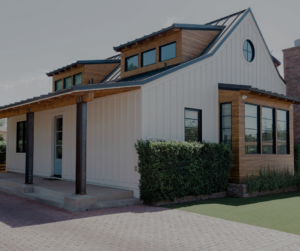Government’s Impact on Energy Efficiency Regulations: A Closer Look
In the intricate web of home management, your HVAC system stands as a stalwart guardian, ensuring your abode remains a haven of comfort in all seasons. Behind its seamless functioning, however, lies the nuanced interplay of government policies. In this detailed exploration, we will delve deep into the multifaceted relationship between the US government, Energy Efficiency Regulations and your HVAC system. By understanding the pros, cons, and the path forward, you can make informed decisions, ensuring not only your comfort but also contributing to a sustainable future.
Pros:
1. Energy Efficiency Regulations: Enhancing Performance
Energy efficiency regulations are the cornerstone of modern HVAC systems. Government-imposed energy efficiency standards serve as the guiding light, compelling manufacturers to innovate. This innovation results in systems that offer optimal performance while consuming less energy, translating into lower utility bills for consumers. As a homeowner, you benefit from these standards through reduced operational costs and a decreased environmental footprint.
In addition to cost savings, these standards promote technological advancements. HVAC systems are now equipped with smart features, allowing for precise temperature control and automation. This not only enhances your comfort but also reduces unnecessary energy consumption, fostering a greener environment.
2. Tax Incentives and Rebates: Financial Benefits for Consumers
Governments, both at the federal and state levels, recognize the need to encourage the adoption of energy-efficient HVAC systems. To incentivize consumers, various tax benefits and rebates are offered to systems that meet Energy Efficiency Regulations. These financial incentives significantly reduce the initial investment required for upgrading to energy-efficient systems. By leveraging these incentives, homeowners can make environmentally conscious choices without straining their budgets.
The financial benefits extend beyond the installation phase. Energy-efficient HVAC systems continue to provide long-term savings on utility bills. Consequently, the return on investment becomes not just a monetary gain but a sustainable lifestyle choice.
3. Environmental Regulations: Protecting the Planet and Public Health
Environmental conservation is a global imperative, and HVAC systems have a role to play. Government regulations ensure the responsible use and disposal of refrigerants, preventing the release of harmful substances into the atmosphere. By adhering to these regulations, HVAC systems contribute significantly to preserving the ozone layer and mitigating climate change.
Furthermore, these regulations safeguard public health. Proper disposal methods prevent contamination of soil and water sources, ensuring a cleaner, healthier environment for communities. Through stringent enforcement, the government ensures that your HVAC system not only keeps your home comfortable but also protects the broader ecosystem.
4. Research and Development: Driving Technological Advancements
Energy Efficiency Regulations Government funding in research and development (R&D) has a catalytic effect on the HVAC industry. These investments drive innovation, leading to the creation of cutting-edge technologies. Smart HVAC controls, geothermal heating systems, and sustainable cooling solutions are a few examples of R&D-driven advancements.
Technological innovations not only enhance the efficiency of HVAC systems but also pave the way for eco-friendly practices. Smart thermostats, for instance, optimize energy usage based on occupancy patterns, reducing unnecessary heating or cooling. By embracing these advancements, homeowners actively participate in the collective effort to combat climate change.
Cons:
1. Initial Costs: Higher Investment for Energy-Efficient Systems
While the benefits of energy-efficient HVAC systems are undeniable, the initial costs can be a deterrent for some homeowners. High-efficiency systems, although promising long-term savings, often come with a higher price tag during the installation phase. This upfront investment can strain budgets, particularly for households with limited financial flexibility.
However, it’s essential to view this as an investment rather than an expense. The initial higher cost is offset by reduced utility bills and potential tax savings. Homeowners must weigh the long-term financial benefits against the immediate financial strain to make an informed decision.
2. Complexity: Navigating Regulations Can Be Challenging
Navigating the labyrinth of government regulations can be daunting. Eligibility criteria for tax incentives and rebates vary, and understanding the specifics can be challenging for the average homeowner. Additionally, compliance with local building codes adds another layer of complexity, requiring meticulous attention to detail during HVAC system installation or upgrades.
The complexity is further compounded by the evolving nature of regulations. Staying abreast of the latest changes and ensuring compliance demands time and effort. Homeowners often find themselves in a position where the desire to adopt energy-efficient solutions clashes with the intricacies of bureaucratic processes.
3. Limited Scope: Regulations Vary Across States and Localities
The United States is a vast tapestry of states and localities, each with its regulations and policies. While federal standards provide a broad framework, there is significant variability at the regional level. Some states offer generous incentives, while others have limited programs. Disparities in regulations can lead to unequal access to energy-efficient solutions, leaving some communities underserved in the quest for sustainable living.
This lack of uniformity raises concerns about the accessibility and affordability of energy-efficient HVAC systems. It highlights the need for a cohesive, nationwide approach to ensure that all homeowners have equal opportunities to embrace eco-friendly technologies.
Conclusion: Striking a Balance for a Sustainable Future
In the complex landscape of HVAC systems and government influence, finding a balance is paramount. The government’s role in promoting energy efficiency, offering financial incentives, and enforcing environmental regulations is undeniably crucial. However, the challenges posed by initial costs, regulatory complexities, and regional disparities cannot be ignored.
As a homeowner, staying informed is the first step toward navigating this intricate terrain. Researching available incentives, understanding local regulations, and consulting professionals can empower you to make informed decisions. Advocacy for uniform regulations and increased accessibility to incentives is vital for fostering a sustainable future.
While challenges exist, they are not insurmountable. With determination, education, and collective effort, homeowners can embrace energy-efficient HVAC systems without compromising their financial stability. By striking a balance between the pros and cons, you not only enhance your home’s comfort and efficiency but also contribute meaningfully to the global movement toward a greener, more sustainable tomorrow.


